#java nepal
Explore tagged Tumblr posts
Text
Nepal van Java, Indonesia: Nepal van Java is a small village famous for its colorful houses on the slopes of Mount Sumbing. This uniqueness is in the houses of residents who inhabit the mountainside. Lined up neatly with unique shapes and distinctive colors. Furthermore, the background of Mount Sumbing makes this place even more similar to Nepal. The difference is that in Nepal there is a snowy Mount Everest in the background. Wikipedia
#Nepal van Java#Hamlet#Butuh#Temanggung#Kaliangkrik District#Magelang Regency#Central Java#Indonesia#Asia#Asian Continent
315 notes
·
View notes
Text
📍Dusun Butuh (Nepal Van Java), Mount Sumbing, Kaliangkrik, Magelang, Island Java, Indonesia 🇮🇩
#video#view#paradise#nature#paraiso#natureza#explore#travel#trip#indonesia#island#nepal van java#volcano#vulcão#village#travel destinations#landscape#vacation#ilha#monte#colorful homes#mountains#goals#island java
71 notes
·
View notes
Photo

by thefreedomcomplex
2K notes
·
View notes
Text
youtube
Mahayogi Rudraksha happy client. Satisfied with the results from the recommended rudraksha. He keeps on buying rudraksha from me.
https://youtube.com/@mahayogirudraskha5053?si=dvPKdJWVOZXixvxa
Instagram -
https://instagram.com/mahayogirudraksha?igshid=NGVhN2U2NjQ0Yg==
Facebook -
https://www.facebook.com/mahendra.kadam.376
Google -
https://g.co/kgs/fHZ6kM
#gemstone#rudralsha#religious studies#religious#yantra#rudraksha#parad#shivling#lordshiva#shaligram#Nepal rudraksha#java rudraksha#certified rudraksha#Youtube
0 notes
Text
Mau Wisata ke Magelang? Nih Rekomendasinya!
Halo Sobat Liburan, ada gak yang di sini pernah wisata ke Magelang? Kalau kamu pernah ke Candi Borobudur, dapat dipastikan kamu pernah ke Magelang nih. Masih banyak orang yang mengira kalau lokasi Candi Borobudur itu di Yogyakarta. Nah, kalau gitu tempat wisata apa aja sih yang bisa kamu kunjungi di Magelang selain Candi Borobudur? Yuk disimak! 1. Gunung Merapi Siapa yang gak tahu dengan gunung…

View On WordPress
#candi borobudur#candi mendut#candi umbul#gunung merapi#jawa#liburan#liburanterus#Magelang#Nepal Van Java#Silancur Highland#Travel#wisata#yogyakarta
0 notes
Text
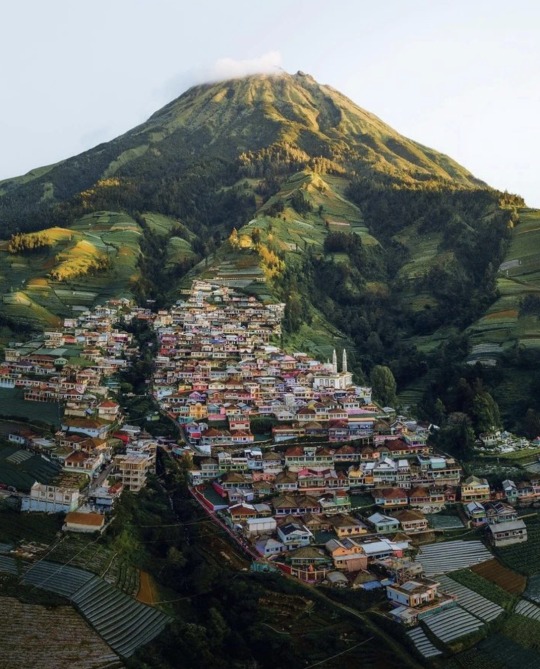
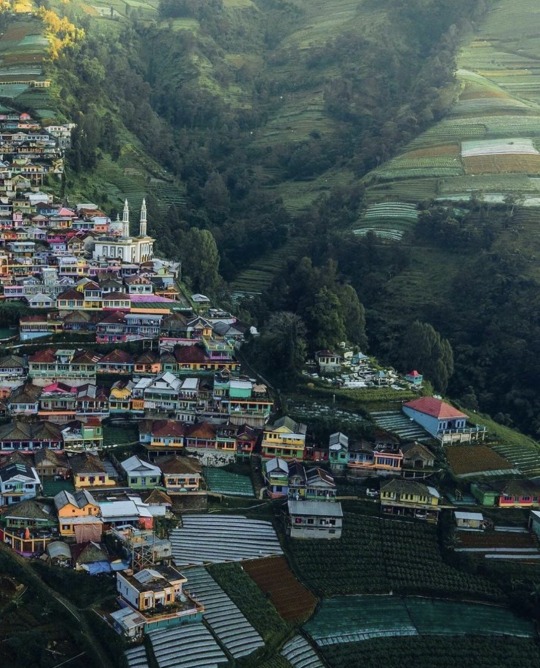
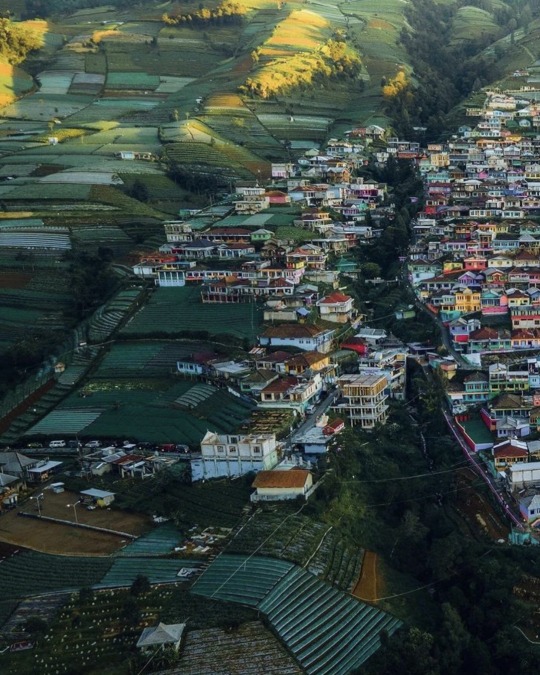
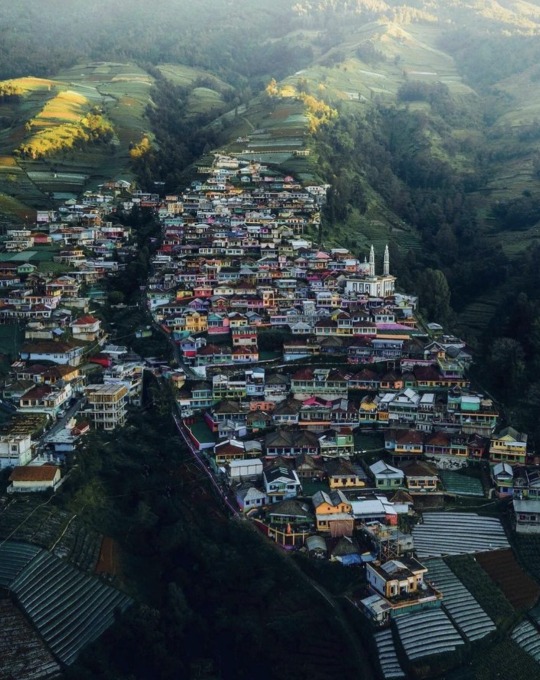
📍Nepal Van
Java Dusun
Butuh, Kaliangkrik Kab,
Magelang. @ogik_jatmiko #travel #travelingare #nepalvanjava #wunderfulindonesia #livefolkindonesia
15 notes
·
View notes
Text

Avalokiteśvara (a.k.a. "Avalokitasvara" or “Avalokiteshvara”) is a bodhisattva who embodies the compassion of all Buddhas. He has 108 avatars, one notable avatar being Padmapāṇi, the one who holds the lotus (padma). He is variably depicted, described, and portrayed in different cultures as either male or female. In Tibet, he is known as Chenrézik. In East Asia, he is commonly known as Guānyīn.
Scholars have not reached a consensus on the origin of the reverence for Avalokiteśvara. Some have suggested that Avalokiteśvara, along with many other supernatural beings in Buddhism, was a borrowing or absorption by Mahayana Buddhism of one or more deities from Hinduism, in particular Shiva or Vishnu. This seems to be based on the name “Avalokiteśvara” (i.e., a variant of “Ishvara”). In Hindu tradition, he has been depicted as an emanation of Shiva and is strongly venerated by the Hindus of Nepal, Java, and Bali.
15 notes
·
View notes
Text
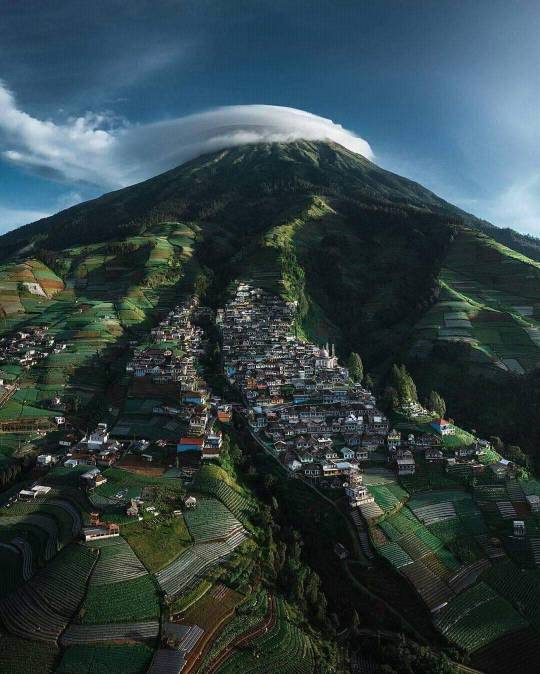
Indonesia 🇮🇩 Nepal Van Java Village on the Slope of Mt Sumbing.
#landscape & scenery#nature#landscapes & sceneries#exotic places#faraway places#exotic locations#exotic destinations
6 notes
·
View notes
Text
Mythic Creatures by Region & Culture
Part 8: Asia and South Pacific
The Mesopotamian entries are often culture-specific and I'll need to sort them into their respective regions in future.
allegedly Asian
Barometz; Salamander
Smaller Entries:
Akathaso, Burma, tree spirit; Barmanou, Pakistan; Benzaiten; Churel; Creatures of Azerbaijan; Dab Hmong; Dakhanavar Armenian; Ḍākinī; Death; Landlord Deities; Mountain God; Peacock Princess; Sin-you; Sky Fox; Teng; Tenghuang; Xeglun Tungusic Ainu
Akkorokamui; Amemasu; Hoyau; Kenas-unarpe; Korpokkur; Mintuci Cambodia; Koan Kroach nightmare fuel; Kting voar also Vietnam; Mrenh kongveal
China
Ao; Ao Guang; Azure Lung; Bai Lung Ma; Bai Suzhen; Bai Ze; Bao Si; Bashe; Bi Fang bird; Bixi; Black Tortoise; Boto_and_Dolphin_Spirits; Cangjie; Chang; Chi; Chinas; Chinese guardian lions; Chinese Monkey Creatures; Chinese serpent killed by Li Ji; Chinese Souls; Chiwen; Chiyou; City God; Daji; Dēnglung; Dilung; Diting; Dogs in Chinese mythology; Dong Yong and the Seventh Fairy; Dǒumǔ; Dragon turtle; Fangfeng; Fangxiangshi; Feilian; Feilung; Feng; Fènghuáng; Fengli; Flying Horse of Gansu; Four Perils; Fox Spirit; Fuxi; Fuzanglung; Fuzhu; Gangcheori; Ghosts in Chinese culture; Gonggong; Guang yi ji; Hairen; He-He Er Xian; Hong; Hòutǔ; Hun and po; Hundun; Huodou; Húxiān; Jiangshi; Jiaolung; Jin Chan; Jinmenju also Japanese; Jiutian Xuannü; Jiutou Zhiji Jing; Jiuweihu; Jué yuán (Japanese version Jueyuan); King Father of the East; Kitchen God; Kuafu; Kui; Lake Tianchi Monster; Luan; Luduan; Lung; Lungma; Lungmu; Magpie Bridge; Magu; Menshen; Mo; Mogwai; Momu; Moon Rabbit; Nian; Nine-headed bird; Nüba; Nüwa; Pangu; Panhu; Panlung; Peng; Penghou; Pig Dragon; Pipa Jing; Pixiu; Pulao; Qianlima also Korean; Qilin; Qingji; Qingniao; Qiulung; Queen Mother of the West; Sanshi; Sha Wujing; Shangyang; Shen; Shen_clam_monster; Shenlung; Shi Dog; Shuimu; Spirit Turtle; Stone Sentinel Maze; Swan Maiden Yao; Taotie; The Governor of Nanke; The Painted Skin; The Nine Peahens and the Golden Apples; Three-legged crow also Japanese and Korean; Tianguo; Tianlung; Tianma; Tu'er Shen; Tubo; Tudigong; Unicorn; Watersheep (see Vegetable Lamb of Tartary); Vermillion Bird; Wangliang; White Tiger; World Turtle; Wutong Shen; Wuzhiqi; Xian; Xiangliu; Xiao; Xiezhi; Xingtian; Xirang; Yao Grass; Yāoguài; Yellow Lung; Yeren; Yeti also Tibetan and Nepali; Yinglung; Zhenniao; Zhu Bajie; Zhulung
Hittite
Annunaki; Illuyanka the equivalent of Hurrian Ḫedammu; Hittite Goddesses of Fate
Hurrian
Annunaki; Ḫedammu the equivalent of Hittite Illuyanka; Tilla; Ullikummi; Upelluri
Iran (Persia)
Akvan Div; Al but also in Mongolia, Russia, Afghanistan, Caucasus; Almas also Turkic and Mongolia; Anguiped also Greek and Roman.; Arzhang Div; Azhdaha; Chamrosh; Div; Div-e Sepid; Fulad-zereh; Gochihr; Griffon; Huma bird; Karkadann allegedly lived in India and Persia; Manticore allegedly lived in India; Peri also Turkic, Islamic (and Indian?); Rakhsh; Shabrang; Shahbaz; Shahmaran Indo-Iranian and Turkic; Shahrokh; Sheshe; Simurgh; Sphinx in a wide sense; Takam; Tyger allegedly lived in Persia; Unicorn; Vegetable Lamb of Tartary the Chinese watersheep allegedly lived in Persia; Werehyena; Winged Unicorn; Zahhāk
Java
Antaboga, pre-Islamic, Hindu; Kakawin; Keong Emas; Wewe Gombel Korea; Bulgae; Chilseok; Dokkaebi; Dokkaebi bangmangi; Egg Ghost; Gasin (house god); Gunungsin; Gwisin; Haesindang Park; Inmyeonjo; Jihaguk daejeok toechi seolhwa; Korean dragon; Korean Virgin Ghost; Munshin; Namu doryeong; Pulgasari; Qianlima also Chinese; Ryong; Samsin Halmeoni; Seonangshin; Sosamsin; The Heavenly Maiden and the Woodcutter; Three-legged crow also Japanese and Chinese; Ungnyeo; Ureongi gaksi;
Mongolia
Al but also in Persia, Russia, Afghanistan, Caucasus; Almas also Iran and Turkic; Aq Bars, winged snow leopard, heraldry from 800s onwards, also Slavic; Mongolian Death Worm Myanmar; Manussiha; Nat; Nawarupa; Pyinsarupa; Sphinx in a wide sense; Thayé; Yokkaso
Nepal
Gurumāpā; Khyāh; Kichkandi; Lākhey; Murkatta; Yeti also Chinese and Tibetan
Philippines
Alan of the Tinguian people; Amalanhig of the Visayan; type of Aswang; Amomongo of the Visayan; Angalo of the Ilocano; Anggitay Philippine centauride, female Tikbalang; Anito; Aswang; Bakunawa; Bal-Bal; Batibat of the Ilocano; Berbalang of Mindanao towns; Berberoka northern Luzon; Bernardo Carpio; Bungisngis Meluz, Orion, Bataan and Batangas; Busaw; Buso Bagobo; Dalaketnon Cebuano; Ekek; Engkanto; Ibong Adarna; Kapre; Kataw; Kumakatok; Manananggal; Manaul; Mandurugo; Minokawa; Nuno sa punso; Philippine Mytic Creatures; Pugot; Sarangay; Sarimanok; Sigbin; Sirena; Siyokoy; Tigmamanukan; Tikbalang; Tiyanak; Wakwak
allegedly Scythian (rider culture, no written records, all inhabitants and creatures based on Greek reports)
Amazons, Amazons (List); Arimaspi north Scythia; Scythian genealogical myth; Scythian religion; Scythians; Tarand; Vegetable Lamb of Tartary
Taiwan
Hanitu; Mo-sin-a; Ta'ai; Tek-ko-kui
Thai
Apsonsi; Cha kla; Hatsadiling; Hemaraj; Kong Koi; Krahang; Krasue; Kuman Thong; Mae Nak Phra Khanong; Mae yanang; Nang Mai; Nang Ta-khian; Nang Tani; Nariphon; Ninlaret; Phi phong; Phi Tai Hong; Phisuea Samut; Pop (ghost); Sphinx in a wide sense; Sudsakorn; Suvannamaccha
Tibet
Gyalpo spirits; Ro-langs; Simhamukha; Snow Lion; Tibetan myth; Wind Horse; Yeti also Chinese and Nepali
Vietnam
Hồ ly tinh; Kting voar also Cambodia; Lạc bird; Nghê; Rồng ; Vietnamese Dragons
Turkic
Äbädä, also found in Siberian mythology; Abasy, also found in Siberian mythology; Aiy Yakut; Al in Mongolia, Russia, Afghanistan, Caucasus; Al Ana; Al Basty from Sumerian; Alara, also found in Siberian mythology; Almas also Iran and Mongolia; Archura; Asena; Ayaz Ata; Bai Baianai also Yakut; Basty Turkic alp or mare; Bichura Turkic household spirit; Chai nenesi; Chesma iyesi; Çor also Siberian; Ergene iyesi; Erkenek; Hortdan; Irshi; Itbarak; İye; Konrul; Korbolko; Kormos; Mhachkay includes Tatar lore; Mu shuvuu; Örek; Peri also Persian, Islamic (and Indian?); Qarakorshaq; Sazakan; Shahmaran Indo-Iranian and Turkic; Sheka; Shurali; Su iyesi; Susulu; Tepegöz; Tulpar; Turul also Hungarian; Upiór also Slavic; Uylak; Werewolf; Yekyua; Yelbeghen; Yer iyesi; Yer-sub; Yuxa
Turkish
Gelin; İn Cin; Uzuh
Siberia
Äbädä, also found in Turkic mythology; Abasy, also found in Turkic mythology; Aiy Yakut; Alara, also found in Turkic mythology; Bai Baianai, also found in Turkic mythology; Çor also Turkic; İye also Turkic\; Menk; Oksoko Yakut; Ongon; Pitsen; Sihirtia; The Great Snake; Yekyua; Yelbeghen
South Pacific Islands
Abaia: Fiji, Solomon and Vanuatu Islands. ; Abere, unspecified "Melanesia"; Adaro, Solomon Islands, merfolk; Aitu, from Maori to various east and west Polynesian cultures; Amai-te-rangi Cook Islands; Apukohai, Hawaii; Aremata-Popoa and Aremata-Rorua; Atonga Samoa; Atua; Auriaria Kiribati; Avatea Cook Islands; Baloma; Barong; Flaming Teeth Fiji; Gazeka Papua New Guinea; Hatuibwari Solomon Islands; Ila (Samoan myth); Kae and Longopoa; Kai-n-Tiku-Aba; Kalamainu'u Hawaii; Kawas; Kihawahine; Kupua Hawaii; Losi Samoa; Menehune Hawaii; Miru Cook Islands; Moʻo Hawaii; Moso's Footprint Samoa; Nawao Hawaii; Nei Tituaabine; Nganaoa; Nightmarchers Hawaii; Pahuanui Tahiti and Society Islands; Pua Tu Tahi; Rogo-Tumu-Here; Savali; Sina and the Eel; Talamaur Vanuatu; Tamangori; Tangaroa; Taotao Mo'na Mariana Islands; Tapairu Cook Islands; Tiʻitiʻi; Tikokura; Tinirau similar to Māori Tinirau and Kae;
Māori
Aitu also common in all parts of East and West Polynesia, sometimes with slightly different meanings; Atua; Hāhau-whenua; Hākuturi; Hawakai; Hemā; Hine-nui-te-pō; Kiwa; Kumi Lizard; Kurangaituku; Maero; Manaia; Maori ghosts; Matuku-tangotango; Moehau; Nuku-mai-tore; Pania of the Reef; Paoro; Patupaiarehe; Ponaturi; Pouākai; Taniwha; Taoroinai; Te Wheke-a-Muturangi; Tinirau and Kae; Tipua; Waitoreke; Whakatau; Whiro
Indian Ocean Islands
Folklore of the Maldives; Rannamaari
Japan (separate categories for Ainu and Okinawa)
Abumi-guchi; Abura-akago; Abura-sumashi; Aka Manto; Akabeko; Akaname; Akashita; Aketeko; Akubōzu; Akugyo; Akuma; Akurojin-no-hi; Ama no Fuchigoma; Amabie; Amanojaku; Amanozako; Amazake-babaa; Amefurikozō; Ameonna; Amikiri; Amorōnagu; Aoandon; Aobōzu; Aonyōbō; Aosaginohi; Arikura-no-baba; Ashi-magari; Ashinaga-tenaga; Ayakashi; Azukiarai; Azukibabaa; Azukihakari;
Bake-danuki; Bake-kujira; Bakemono; Bakeneko; Bakezōri; Baku; Banchō; Basan; Betobeto-san; Binbōgami; Biwa-bokuboku; Boroboroton; Bukit Timah Monkey Man WWII Japanese soldiers in Bukit Timah (Singapore) saw this; Byōbunozoki;
Chimimōryō; Chōchin'obake; Chōchinbi;
Daidarabotchi; Daikokuten; Danzaburou-danuki; Datsue-ba; Dodomeki; Dōsojin;
Ehon Hyaku Monogatari; Emishi; Enenra;
Fūjin; Funayūrei; Furaribi; Furutsubaki-no-rei; Futakuchi-onna;
Gagoze; Gashadokuro; Gazu Hyakki Yagyō; Gohō dōji; Goryō;
Hagoromo (swan maiden play); Hakuzōsu; Hanako-san; Hannya; Hare of Inaba; Harionagu; Hashihime; Heikegani; Hell Courtesan; Hibagon; Hiderigami; Himiko; Hito-gitsune; Hitodama; Hitotsume-kozō; Hitotsume-nyūdō; Hone-onna; Hotoke; Hyakki Tsurezure Bukuro; Hyakki Yagyō_Wild Hunt; Hyōsube; Hyottoko;
Ibaraki-dōji; Ikiryō; Ikuchi; Inari Ōkami; Inugami; Inugami Gyōbu; Ishinagenjo; Isonade; Issie; Issun-boushi; Itsumade; Ittan-momen;
Janjanbi; Japanese Serpent; Jikininki; Jinmenju also Chinese; Jinmenken; Jorōgumo; Jubokko; Jueyuan (Chinese version Jué yuán);
Kaibyō; Kamaitachi; Kami; Kamikiri; Kappa; Karura; Kasa-obake; Kasha; Kawauso; Kechibi; Keneō (oni); Kidōmaru; Kijo (folklore); Kinoko; Kitsune; Kitsune no yomeiri; Kitsunebi; Kiyohime; Kodama; Kōga Saburō; Komono; Konaki-jiji; Konjaku Gazu Zoku Hyakki; Konjaku Hyakki Shūi; Konpira Gongen; Koromodako; Koto-furunushi; Kotobuki; Kōya Hijiri; Kubikajiri; Kuchisake-onna; Kudagitsune; Kudan; Kumiho; Kuraokami (ryu); Kuro-shima (Ehime); Kurozuka; Kuzenbo; Kuzunoha; Kuzuryū;
Makuragaeshi; Maneki-neko; Matarajin; Mazoku; Megijima; Menreiki; Miage-nyūdō; Mikaribaba; Mikoshi-nyūdō; Misaki; Mishaguji; Mishihase; Mizuchi; Mokumokuren; Momiji; Momotarō; Mononoke; Mōryō; Mujina; Myōbu;
Namahage; Namazu; Nekomata; Ningen; Ningyo; Niō; Noderabō; Noppera-bō; Nue; Nuppeppō; Nurarihyon; Nure-onna; Nuribotoke; Nurikabe; Nyūdō-bōzu;
Oboroguruma; Ochimusha; Ōkubi; Okuri-inu; Ōmukade; Oni; Oni Gozen; Onibi; Onihitokuchi; Onikuma; Onmyōji; Onryō; Ōnyūdō; Ootakemaru; Orochi; Osakabehime; Osaki; Otoroshi; Oukami; Ouni;
Raijin; Raijū; Rashōmon no oni; Reikon; Rōjinbi; Rokkaku-dō; Rokurokubi; Ryū; Ryūgū-jō; Ryūjin;
Sakabashira; Samebito; Sankai; Sarutahiko Ōkami; Satori; Sazae-oni; See-Hear-Speak No Evil; Sessho-seki; Setsubun; Shachihoko; Shapeshifter; Shibaemon-tanuki; Shichinin misaki; Shidaidaka; Shikigami; Shikome; Shinigami; Shiranui; Shirime; Shiryō; Shōjō; Shōkera; Shuihu; Shuten-dōji; Smallpox demon; Sōjōbō; Sorei; Sunekosuri; Suzuka Gozen;
Takaonna; Takarabune; Tamamo-no-Mae; Teke Teke; Tengu; Tenka; Tennin; Tenome; Tentōki and Ryūtōki; Tesso; Three-legged crow also Chinese and Korean; Tōfu-kozō; Toyotama-hime; Tsuchigumo; Tsuchinoko; Tsukumogami; Tsukuyomi-no-Mikoto; Tsurara-onna; Tsuru no Ongaeshi; Tsurube-otoshi; Tsurubebi;
Ubagabi; Ubume; Umi zatō; Umibōzu; Ungaikyō; Ushi no toki mairi; Ushi-oni; Uwan;
Waira; Wani; Wanyūdō; Watatsumi;
Yako; Yakusanoikazuchi; Yama-uba; Yamabiko; Yamabito; Yamainu; Yamajijii; Yamata no Orochi; Yamawaro; Yanari; Yashima no Hage-tanuki; Yato-no-kami; Yobuko; Yōkai; Yōsei; Yosuzume; Yotsuya Kaidan; Youkai; Yuki-Onna; Yume no seirei; Yūrei;
Zashiki-warashi; Zennyo Ryūō; Zuijin; Zashiki-warashi
Okinawa
Kijimuna
allegedly Arabic Cinnamologus
Morocco Aisha Qandicha
Mesopotamia Abyzou; Annunaki; Anzû; Ardat-lilî; Beings of Irkalla or Kur; Bull of Heaven; Dagon; Edimmu; Ghosts in Mesopotamian culture; Hanbi; Humbaba; Igigi; Kilili; Kulullû; Kusarikku; Labbu; Lahamu; Lamashtu; Lilin also in Jewish folklore; Lotan; Lugal-irra; Lulal; Mukīl rēš lemutti; Mušḫuššu; Mušmaḫḫū; Namtar; Ninimma; Ninurta; Pazuzu; Rabisu; Scorpion men; Sea goat; Serpopard; Seven-headed serpent; Six-headed Wild Ram; The Four Winds; Tiamat; Udug; Ugallu; Umū dabrūtu; Uridimmu; Urmahlullu; Wild Man, Wild Woman ; Wild Men, Wild Women Enkidu; Zaqar
allegedly Mesopotamian Sirin
Akkadian Abkallu, also Sumerian; Akhkhazu, later Babylonian; Alû also Sumerian, an utukku with no mouth, ears, lips; Asag also Sumerian; Bašmu (possibly other parts of Mesopotamia, but badly attested); Lilu; Ušumgallu
Assyrian Adrammelech killed an Assyrian king; Alal references Babylonians
allegedly Assyrian Aralez in Armenian folklore, Semiramis controls an Aralez
Babylonian Akhkhazu, earlier Akkadian; Alal from Chaldean-Assyrian sources; Kulilu
Sumerian Abkallu, also Akkadian; Al Basty, later also in Turkic traditions; Alû also Akkadian, an utukku with no mouth, ears, lips; Asag also
Akkadian Kuli-ana; Palm Tree King#
Mesopotamian (Other) Atargatis Canaanite goddess; Tannin Canaanite; Yam Canaanite
Buddhism
Acala, Vajrayana Buddhism & East Asian Buddhism; Apalala a naga king; Apsara; Asura; Āṭavaka; Cakrasaṃvara Tantra; Ḍākinī; Diting; Girimekhala; Hayagriva; Heruka; Hevajra; Hungry Ghost; Kalaviṅka; Kangiten Buddhism in Japan; Kṣitigarbha; Kuṇḍali; Mahakala; Mahamayuri; Mahoraga; Manjushrikirti; Mara; Mucalinda; Nariphon; Niō; Preta; Rakta Yamari; The sixteen dreams of King Pasenadi; Trailokyavijaya; Tulpa; Vajrakilaya; Vajrayakṣa; Vemacitrin; Wisdom King; Wrathful deities
Jainism Ambika; Dharanendra; Gomukha; Jwalamalini; Mahoraga; Nabhi; Rishabhanatha
India
Aghasura asura in shape of 8 mile serpent (500 CE to 1000 CE, but most likely between 800 and 1000 CE); Agni_deity; Airavata; Akshayavata tree (estimated between the 4th and 15th century CE. Some parts of the text may be from the 750 to 1000 CE period.); Anasuya; Andhaka asura with 1000 heads 2000 eyes 1000 arms; Angiris; Apsara; Arjuna; Asi; Asura; Bakasura a rakshasa (despite "asura" in the name); Barbarika; Basnak Dau; Bhagadatta; Bhargava; Bhoota; Bhramari; Bhringi; Brahmahatya; Brahmarākṣasaḥ; Buru; Chakora; Chana and Munda; Chaturbhuja; Chedipe; Chidambara Rahasiyam; Chinas; Chir Batti ghost light; Chitrāngada; Chyavana; Creatures from Vetala Tales; Daayan; Daitya; Daksha\; Daksha yajna; Danava; Daruka; Dawon; Devas; Devatas; Durgamasura; Durukti; Dvarapala; Dvipa; Gādhi; Gaja; Gajasimha; Gaṇa; Gandaberunda; Gandharva; Garuda; Ghosayatra Parva; Grahana; Guhyaka; Gusainji Maharaj; Halahala; Hamsa; Haryashvas and Shabalashvas; Hidimba; Hiranyakashipu; Hiranyaksha; Ichchadhari naag; Ila; Ilavida; Ilvala and Vatapi (asura); Iravati; Jahnu; Jarita; Jvarasura; Kabhanda; Kālakeya ; Kālakeyas; Kalanemi (asura); Kalanemi (Ramayana); Kaliya; Kamadhenu; Kamakhya; Ketu; Keukegen; Kimpurushas; Kinnara; Kirmira; Kirtimukha; Koka and Vikoka; Kotavi; Kubera; Kumbhakarna; Kumbhāṇḍa; Kuntilanak ; Kurma; Kuttichathan; Lajjā Gaurī; Mada; Madhu-Kaitabha; Madhusudana; Mahabali; Maharajikas; Mahishasura; Mahoraga; Makara; Manasa_Snake_Goddess; Mānasaputra; Mande Barung; Maṇibhadra; Manohara; Mara_Goddess2 identical name to another death goddess Mara_Goddess (unrelated???); Maricha; Matsya; Mayasura; Monkey-man of New Delhi; Mṛtyu; Mukasura; Naga; Naga fireballs; Naga people; Nagaraja; Naimiṣāraṇya; Nandi; Narakasura; Narantaka-Devantaka; Narasimha Half human / Half Lion --> how Vishnu fulfills a prophecy like Eowyn or MacBeth; Navagunjara; Nivatakavacha; Pahlavas; Panchajanya; Panchamukha; Pichal Peri; Pippalada; Pishachas; Pitr; Poubi Lai; Prahlada; Pratyangira; Puloman; Putana; Rāgarāja; Rākshasas; Raktabīja; Ravana; Rishyasringa; Rukmavati; Samagana; Sampati; Sarama; Sarpa Kavu; Shahmaran Indo-Iranian and Turkic; Shambara; Shankha; Shatarupa; Shesha; Shikhandi; Shukra; Sphinx in a wide sense; Srbinda; Subahu; Sunda and Upasunda; Suparṇākhyāna; Ten Giant Warriors; Tree of Jiva and Atman; Tripurasura; Trishira; Tumburu; Ucchusma; Uchchaihshravas; Ulupi; Upamanyu; Vadavagni; Vahana (Mount of a Deva); Vajranga; Vanara; Varaha; Varahi; Vasuki_Naga_King; Vel; Vetala; Vidyādhara ; Vidyādharas; Viprachitti; Viradha; Vishala; Vritra; Vritra (dragon); Vyaghrapada; World Elephant; World Turtle; Yaksha; Yakshini; Yali; Yama; Yamaduta; Yamantaka
allegedly Indian Abarimon; Acheri; Aeternae; Astomi Pliny the Elder; Bragmanni; Calingae Pliny the Elder; Crocotta; Gold-digging ant; Griffon; Indus worm; Karkadann; Kratu; Mandi; Manticore; Monopod; Nuli; Odontotyrannus; Panther; Pard; Rompo; Salabhanjika; Sciritae; Sharabha; Tandava; Unicorn; Wild Man, Wild Woman ; Wild Men, Wild Women
Ayyavazhi Sect Kroni
Assam Baak
Bengali Bengali myths; Byangoma
Kannada Nale Ba
Kashmir Bramrachokh will-o-wisp; Rantas
Kerala Aana Marutha
Malayalam South India; Kallana
Manipur / Meitei Haosi Namoinu; Helloi; Hingchabi; Kanglā Shā; Kao; Keibu Keioiba; Khoirentak tiger; Khongjomnubi Nonggarol; Lai Khutshangbi; Meitei dragons; Meitei Mythic Creatures; Nongshāba; Pākhangbā; Sagol kāngjei; Samaton; Uchek Langmeitong; Umang Lai Sanamahism; Yenakha Paotapi Sri Lanka; Devil Bird; Maha Sona; Nittaewo; Reeri Yakseya; Sphinx in a wide sense; Tharaka; Yakseya and Yakka
Tamil Mamuni Mayan; Nadi astrology; Tamil myth
Indonesia Babi ngepet; Bukit Timah Monkey Man Singapore; Hainuwele; Hantu; Hantu Air; Hantu Bongkok; Hantu Raya; Hantu Tinggi; Jenglot; Kuntilanak also India; Lang Suir aka Langsuyar; Malay Creatures; Manseren Manggoendi; Nyi Roro Kidul; O Tokata; Orang bunian; Orang Mawas; Orang Minyak; Orang Pendek; Pelesit; Penanggalan similar to Philippines Manananggal; Pocong; Polong; Putri Tangguk; Rangalau Kiulu Phantom; Seri Gumum Dragon; Seri Pahang; Singa; Suanggi; Suangi; Sundel bolong; Tuyul; Warak ngendog
allegedly Malay Á Bao A Qu; Abath
Bali Bhoma; Gajamina; Leyak; Ogoh-ogoh
Flores Ebu gogo
Notify me about any mistakes or if any of these mythic figures, beings and creatures should not be used in art or fiction.
#mythic creatures#mythic creature list#legendary creatures#legendary creature#legendary being#legendary beings#creature list#legendary creature list#monster list#list of monsters
6 notes
·
View notes
Text
Nine Mukhi Rudraksha – Full Benefits and Details
nine Mukhi Rudraksha nine Mukhi Rudraksha has 9 natural vertical lines on its surface. This OrignalRudraksha is found mostly in Nepal and Java. This is also the favorite Rudramanaka of Mother Shakti and Navmukhi Rudraksha ithe representative of Goddess Durga endowed with Navshakti. The blessings of Kapil Muni and Bhairodev keep showering on this Rudraksha. It is especially worn as a protective shield, protecting the wearer from all types of evil properties, black magic and negativity. It provides strength and energy to the wearer. The ruling planet of 9 Mukhi Rudraksha is Ketu.
Unlike other Rudraksha, which display some or the other form of Lord Vishnu, but this bead represents the power of Maa Durga. This Rudraksha works as a home remedy to remove any kind of negative effects of malefic planets. According to Vedic astrology, planets influence the lives of humans. Since planets are always in motion, in the context of astrology, this transit occurs from one zodiac sign to another from time to time. The speed of some planets is slow while the speed of some planets is fast. All these planets keep changing their behavior negatively and positively with every transit. Based out of a zodiac sign, an astrologer makes predictions about the movements of those planets and informs you about good and bad times. It will also tell you about those planets which are negatively affecting your life. 9 Mukhi Rudraksha helps in reducing the negative effects of malefic planets.
Benefits of wearing 9 Mukhi Rudraksha Helps in employment, personality development and success in interviews.
It makes the wearer confident and powerful.
It removes the fear of time from the mind of the wearer and gives him the freedom to live freely.
It helps in removing the malefic effects of planets Ketu and Rahu.
It blesses women to attain physical and mental strength
It is recommended for career oriented women
It removes stomach related problems
It also helps in curing body aches, allergies affecting the skin
It boosts confidence in the wearer.
It helps in keeping a check on Kaal Sarp Dosh
It helps to establish connection with the universe by healing the Sahasrara Chakra
It keeps negative energy away from the wearer
It helps in warding off all kinds of enemies
It helps in destroying all the sins and worries of the person and connects him with Goddess Durga.
It associates the wearer with bravery, courage and endurance.
It helps in making the wearer positive and dynamic.
It helps improve the functioning of the brain and nervous system.
It helps in treating the problems of dizziness and vertigo.
It helps in removing phobias, anxieties and hallucinations in the person.
It helps in maintaining balance between worldly affairs and spiritual life.
It helps in treating epilepsy in the person.
It helps in removing depression and physical weakness of the Rudraksha wearer.
Method of wearing 9 Mukhi Rudraksha Saturday is considered to be the auspicious day to wear 9 Mukhi Rudraksha. First of all, keep Rudraksha in a copper vessel and sprinkle Ganga water on it. Then sit in the east direction of your temple and chant the mantra “Om Hreem Hoon Namah” and wear Rudraksh and chant it 108 times. If your astrologer suggests you to chant some additional mantras then you can do accordingly.
Note: Make sure that the Rudraksha is in direct contact with your body, so that its effect is fully visible to you.

#rudraksha#mahadev#bholenath#kedarnath#mahakal#shivay#omnamahshivaya#rudrakshabeads#shiv#harharmahadev#kedarnathdham#rudra#lordshiva#india#tungnath#rudraksh#pahadi#uttarakhand#rudraprayag#uttarakhandi#omkareshwar#shivatemple#rudrakshamala#kedarkantha#rudranath#mahakaleshwar#What is the mantra for 9 Mukhi Rudraksha?#Who can wear 9 Mukhi Rudraksha?#What is the price of 9 Ratti Rudraksha?#What is the price of 9 face Nepal Rudraksha?
3 notes
·
View notes
Text
Events 6.21 (after 1960)
1963 – Cardinal Giovanni Battista Montini is elected as Pope Paul VI. 1964 – Three civil rights workers, Andrew Goodman, James Chaney and Michael Schwerner, are murdered in Neshoba County, Mississippi, United States, by members of the Ku Klux Klan. 1970 – Penn Central declares Section 77 bankruptcy in what was the largest U.S. corporate bankruptcy to date. 1973 – The Primer Congreso del Hombre Andino is inaugurated in Arica, Chile. 1973 – In its decision in Miller v. California, 413 U.S. 15, the Supreme Court of the United States establishes the Miller test for determining whether something is obscene and not protected speech under the U.S. constitution. 1978 – The original production of Tim Rice and Andrew Lloyd Webber's musical, Evita, based on the life of Eva Perón, opens at the Prince Edward Theatre, London. 1982 – John Hinckley is found not guilty by reason of insanity for the attempted assassination of U.S. President Ronald Reagan. 1985 – Braathens SAFE Flight 139 is hijacked on approach to Oslo Airport, Fornebu. Special forces arrest the hijacker and there are no fatalities. 1989 – The U.S. Supreme Court rules in Texas v. Johnson, 491 U.S. 397, that American flag-burning is a form of political protest protected by the First Amendment. 1993 – Space Shuttle Endeavour is launched on STS-57 to retrieve the European Retrievable Carrier (EURECA) satellite. It is also the first shuttle mission to carry the Spacehab module. 2000 – Section 28 (of the Local Government Act 1988), outlawing the 'promotion' of homosexuality in the United Kingdom, is repealed in Scotland with a 99 to 17 vote. 2001 – A federal grand jury in Alexandria, Virginia, indicts 13 Saudis and a Lebanese in the 1996 bombing of the Khobar Towers in Saudi Arabia that killed 19 American servicemen. 2004 – SpaceShipOne becomes the first privately funded spaceplane to achieve spaceflight. 2005 – Edgar Ray Killen, who had previously been unsuccessfully tried for the murders of James Chaney, Andrew Goodman, and Mickey Schwerner, is convicted of manslaughter 41 years afterwards (the case had been reopened in 2004). 2006 – Pluto's newly discovered moons are officially named Nix and Hydra. 2006 – A Yeti Airlines de Havilland Canada DHC-6 Twin Otter crashes at Jumla Airport in Nepal, killing nine people. 2009 – Greenland assumes self-rule. 2012 – A boat carrying more than 200 migrants capsizes in the Indian Ocean between the Indonesian island of Java and Christmas Island, killing 17 people and leaving 70 others missing. 2012 – An Indonesian Air Force Fokker F27 Friendship crashes near Halim Perdanakusuma International Airport, killing 11.
0 notes
Text
Kirtimukha: The Sacred Guardian of Energy, Ego, and Enlightenment
There’s something hauntingly beautiful about the Kirtimukha face. Fierce and wild, with gaping mouth and sharp fangs, it appears above countless temple doors across India and Southeast Asia. But the more you stare into it, the more you realize—it’s not there to scare. It’s there to protect, to teach, and to transform.
In today's world, where we are surrounded by digital noise, social comparisons, and inner chaos, symbols like Kirtimukha bring us back to something timeless. They ground us, humble us, and shield us. And in recent years, more people have started placing Kirtimukha for home not just as a decorative choice, but as a spiritual and vastu remedy.
So what’s the real story behind this mysterious face? Why is it carved into temples, homes, and hearts across centuries?
The Story Behind the Kirtimukha Face:
The origins of Kirtimukha come from the Skanda Purana, one of Hinduism’s sacred texts. When a powerful demon sent a proud messenger to challenge Lord Shiva, the deity’s third eye opened in rage. From that eye, a terrifying creature was born—giant, hungry, and unstoppable.
When the messenger backed off and peace was restored, the creature asked Shiva what it should do now. Shiva simply said: “Devour yourself.”
And so it did—without question or hesitation—eating itself until only the face remained.
Shiva, moved by this complete act of surrender and obedience, declared it Kirtimukha, the Face of Glory, and blessed it with the role of eternal guardian.

What Does Kirtimukha Truly Represent?
It might look like a monster, but Kirtimukha isn’t evil. In fact, it's one of the most spiritually profound icons in Hindu and Buddhist art. Here's what it symbolizes:
Destruction of ego and pride
Self-purification before entering the sacred
Guardian of spiritual spaces
Awareness of inner illusions
Protection from negative forces and energy
In many ways, Kirtimukha is a mirror. It challenges us to look inward and shed the parts of ourselves that aren’t real—the masks, the arrogance, the attachments.
Why Is Kirtimukha Found in Temples?
Have you ever noticed how every great temple—especially in South India—has a Kirtimukha face carved above the main entrance?
It’s not just for show.
In spiritual architecture, the entry to a temple symbolizes the crossing from the material to the divine. The Kirtimukha stands guard to ensure only pure intentions can pass through.
This face is often found on:
Gopurams (temple towers)
Archways
Idol frames
Sacred doorway lintels
It’s like a cosmic filter, ensuring that only clarity, surrender, and devotion walk through the threshold.
Kirtimukha for Home: More Than Decoration:
These days, people are bringing the Kirtimukha face into their homes—not just for tradition, but for its spiritual protection and vastu benefits.
Why you should consider Kirtimukha home decor:
It acts as a nazar battu – protecting from the evil eye and jealousy
It calms the environment by blocking negativity
It aligns your space with positive cosmic energy
It serves as a spiritual reminder to stay grounded and egoless
From brass wall hangings to resin sculptures, the Kirtimukha face for entrance is now a favorite among interior decorators and vastu experts alike.
Global Presence: Kirtimukha Beyond India:
What amazed me while researching is that Kirtimukha-like faces appear in places far beyond India.
In Bali and Java, they appear on temples as Kala heads
In Nepal, you’ll find them above sacred doorways in both Hindu and Buddhist temples
Even in Tibetan art, similar guardians protect sacred thangkas and mandalas
The message is universal: guard the gateway between the outer world and the inner self.
Modern-Day Meaning of Kirtimukha:
In today’s fast-paced world, most of us are constantly juggling identity, performance, and expectation. We wear masks—many of them—just to survive.
And that’s why Kirtimukha still matters.
It asks us to devour the false layers. To let go of pride, comparison, and illusion. What remains is the raw, real, radiant self—just the Face of Glory.
Real Reflection: What I Learned from Kirtimukha:
I bought my first Kirtimukha wall mask out of curiosity. I liked how powerful it looked. But as I learned its story and placed it above my home’s entrance, something shifted—not magically, but energetically.
It became a daily reminder that no matter what the world throws at me, I must face it with clarity, not ego. That peace isn’t about controlling life, but about letting go of the masks we wear.
Final Words: Invite Kirtimukha Into Your Life:
You don’t have to be a saint to honor Kirtimukha. You just have to be honest enough to evolve.
Whether you see it as a guardian, a symbol, or a silent spiritual guide, bringing Kirtimukha into your space means you’re ready to clear the clutter—both around you and within you.
“When the ego is devoured, only truth remains.”
Let Kirtimukha guard your home, your heart, and your higher path. Visit kirtimukha.co.in for vastu-friendly, sacred, and artistically crafted designs that protect and inspire.
0 notes
Text
Best Kathmandu Day Tour Itinerary for First-Time Visitors
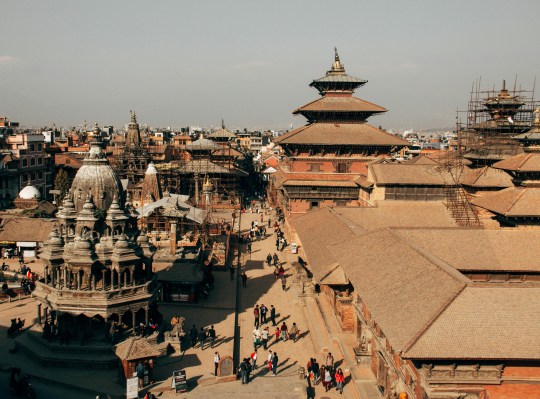
Kathmandu, the vibrant capital of Nepal, is a city rich in history, culture, and spiritual significance. For first-time visitors, a well-planned Kathmandu day tour offers a perfect introduction to Nepal’s heritage. From ancient temples and royal palaces to bustling marketplaces and UNESCO World Heritage Sites, there’s plenty to explore in just one day.
This article provides the best one-day itinerary in Kathmandu for travelers who want to experience the city’s highlights without feeling rushed. It includes must-see sites, travel tips, and cultural insights tailored to first-time visitors.
Why Take a Day Tour in Kathmandu?
Kathmandu is compact yet packed with cultural treasures. A day tour allows you to:
Explore centuries-old architecture and religious sites
Learn about Nepali history, art, and spiritual traditions
Get a taste of local life and cuisine
Make the most of limited travel time before heading to treks or other regions
Whether you're in Nepal for trekking, mountaineering, or just a cultural visit, dedicating one day to Kathmandu’s highlights is both convenient and rewarding.
Overview of the Day Tour Itinerary
Start: 8:00 AM from your hotel
End: 6:00 PM back at your hotel
Mode of transport: Private car, taxi, or guided tour vehicle
Main attractions covered:
Swayambhunath (Monkey Temple)
Kathmandu Durbar Square
Pashupatinath Temple
Boudhanath Stupa
Patan Durbar Square (optional extension)
Detailed Kathmandu Day Tour Itinerary
8:00 AM – Hotel Pickup and Drive to Swayambhunath
Start your day early with a visit to Swayambhunath Stupa, also known as the Monkey Temple. This ancient Buddhist shrine sits atop a hill, offering panoramic views of Kathmandu Valley.
Highlights:
The iconic white stupa with Buddha’s all-seeing eyes
Prayer wheels and Tibetan influence
Monkeys roaming freely around the temple
Early morning chants and incense
This site symbolizes Nepal’s religious harmony, attracting both Buddhists and Hindus.
9:30 AM – Explore Kathmandu Durbar Square
Next, head to Kathmandu Durbar Square, the historical center of the old royal palace complex. This area showcases traditional Newari architecture, pagoda-style temples, and courtyards.
Highlights:
Hanuman Dhoka Palace
Kumari Ghar (Home of the Living Goddess)
Taleju Temple
Local markets and street life
Spend around 1.5 hours walking through the square, visiting museums, and watching artisans at work.
11:30 AM – Drive to Pashupatinath Temple
A short drive east takes you to Pashupatinath, Nepal’s most sacred Hindu temple dedicated to Lord Shiva. Though non-Hindus are not allowed inside the main temple, the surrounding complex is rich with spiritual and cultural experiences.
Highlights:
Observe open-air cremation ceremonies along the Bagmati River
Explore hundreds of shrines, lingams, and statues
Watch sadhus (Hindu ascetics) meditating or performing rituals
Visiting Pashupatinath provides deep insight into Hindu beliefs about life, death, and rebirth.
1:00 PM – Lunch Break Near Boudhanath
Stop for lunch at one of the many rooftop cafes near Boudhanath Stupa. Popular options include Himalayan Java, Stupa View Restaurant, or Roadhouse Café.
Enjoy traditional Nepali meals like dal bhat, momos, or thukpa, or opt for international fare. A peaceful rooftop view of the stupa makes this lunch memorable.
2:00 PM – Visit Boudhanath Stupa
After lunch, explore Boudhanath, one of the largest and most revered stupas in the world. A major center of Tibetan Buddhism, it’s surrounded by monasteries, prayer wheels, and colorful prayer flags.
Highlights:
Walk clockwise around the stupa with pilgrims
Light butter lamps for good fortune
Visit a nearby monastery and attend a short prayer session
Shop for Tibetan handicrafts or thangka paintings
This part of the day is calm, spiritual, and culturally rich.
3:30 PM – Optional Extension to Patan Durbar Square
If time and energy permit, drive 30 minutes south to Patan (Lalitpur) Durbar Square. Known for its intricate craftsmanship, Patan is a cultural gem in the valley.
Highlights:
Krishna Mandir, Hiranya Varna Mahavihar (Golden Temple)
Patan Museum – one of the best in South Asia
Local metalworkers and woodcarvers in action
Alternatively, you can head back to your hotel to rest or explore Thamel, Kathmandu’s popular tourist hub.
5:30 PM – Return to Hotel or Explore Thamel
Conclude your tour by returning to your hotel or spending some time in Thamel, where you can shop for souvenirs, try local craft beer, or relax in a garden café.
Kathmandu Day Tour Map (Suggested Route)
Swayambhunath → Kathmandu Durbar Square → Pashupatinath → Boudhanath → (Optional: Patan Durbar Square)
Travel Tips for First-Time Visitors
Hire a guide for deeper cultural understanding and navigation help
Dress modestly, especially at religious sites
Carry cash for entrance fees and local purchases
Use sunscreen and drink water throughout the day
Respect local customs—remove shoes before entering temples, ask before taking photos
Entrance Fees (as of 2025):
Swayambhunath: NPR 200
Kathmandu Durbar Square: NPR 1,000
Pashupatinath: NPR 1,000
Boudhanath: NPR 400
Patan Durbar Square: NPR 1,000
Is a One-Day Tour Enough?
While Kathmandu deserves more than a day, this one-day itinerary gives a well-rounded glimpse of its spiritual, architectural, and historical highlights. It’s perfect for:
Travelers transiting before or after treks
Short-stay visitors
Those interested in Nepalese culture and religion
If you have more time, consider visiting Bhaktapur, the Garden of Dreams, or taking a Himalayan mountain flight the next morning.
Conclusion
A well-planned Kathmandu day tour can be a highlight of your visit to Nepal, especially for first timers. The city offers a vibrant mix of sacred sites, royal palaces, and authentic local life���all within a manageable distance for a one-day journey.
From watching the sunrise over Swayambhunath to experiencing Tibetan chants at Boudhanath, you’ll carry unforgettable memories of this ancient yet living city.
0 notes
Text
youtube
Did we just find the BEST coffee in KATHMANDU? Looking for the BEST coffee in Kathmandu? We think we found it! Nestled in the heart of Nepal’s bustling capital, we stopped by Himalayan Java—a legendary coffee shop that locals and tourists alike rave about. With mountain views, rich Nepali beans, and an incredible atmosphere, this spot might just serve the best brew in the Himalayas! In this video, we take you inside one of the most popular cafes in Kathmandu to try their famous cappuccinos, lattes, and locally sourced coffee. We share what makes Himalayan Java so special, from its cozy interiors to the story behind the beans. If you're a coffee lover planning a trip to Nepal, this is a must-watch (and a must-visit)! 🗺️ Filmed during our family trip to Nepal 👨👩👧👦 Travel vlog from a British family exploring Kathmandu 📍 Location: Himalayan Java Coffee, Thamel, Kathmandu ✅ Subscribe To The Channel For More Videos: https://www.youtube.com/@The-wanderlust-kids/?sub_confirmation=1 ✅ Stay Connected With Me: 👉 Instagram: https://ift.tt/ZAgIN0D 👉 Facebook: https://ift.tt/wLr4ISl ============================== ✅ Other Videos You Might Be Interested In Watching: 👉 https://www.youtube.com/watch?v=EgffulQ4bhs 👉 https://www.youtube.com/watch?v=t2bgeNkv4ug 👉 https://www.youtube.com/watch?v=MT1zabO1-hw 👉 https://www.youtube.com/watch?v=9wSLNBFpY4g 👉 https://www.youtube.com/watch?v=8eP735anoZQ 👉 https://www.youtube.com/watch?v=Caec2_dOiE4 ============================= 🔎 Related Phrases: best coffee in kathmandu, himalayan java coffee, nepali coffee culture, kathmandu coffee shops, where to get coffee in nepal, coffee in thamel, best cafes in kathmandu, kathmandu travel vlog, nepali coffee beans, thamel cafe review, family travel in nepal, british family in nepal, himalayan java kathmandu, coffee tasting in kathmandu, coffee lovers nepal #BestCoffeeInKathmandu, #HimalayanJava, #NepalVlog, #KathmanduCoffee, #NepaliCoffee, #FamilyTravel, #CoffeeLovers, #KathmanduWithKids, #CafeCultureNepal, #TravelNepal via The Wanderlust Kids https://www.youtube.com/channel/UCO450Y-peQ_R-e5mkrG5I_Q May 18, 2025 at 09:28PM
#familytravel#adventurewithkids#familyadventures#vacationmode#exploretheworld#egypttravel#indiatravel#traveltips#Youtube
0 notes
Link
Autor: Olga Guedes
0 notes
Text
Authentic 12 Mukhi Rudraksha – Empower Your Life with Divine Energy | Hare Krishna Mart
Discover the transformative power of the original 12 Mukhi Rudraksha, symbolizing Lord Surya's brilliance. Enhance leadership qualities, attract prosperity, and shield yourself from negativity. Ideal for professionals and seekers of success. Certified and energized for immediate benefits.
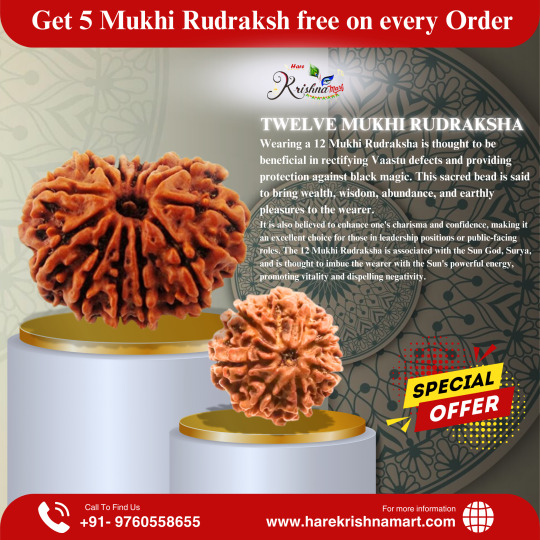
Read more:
0 notes